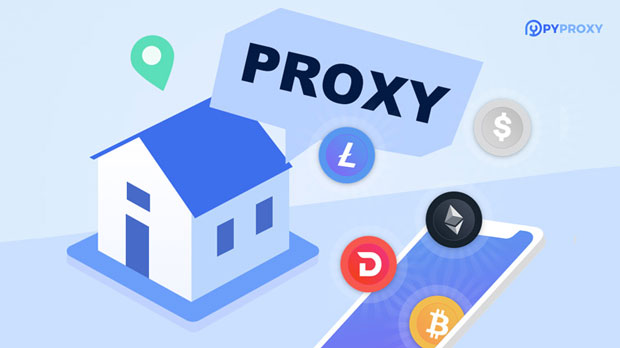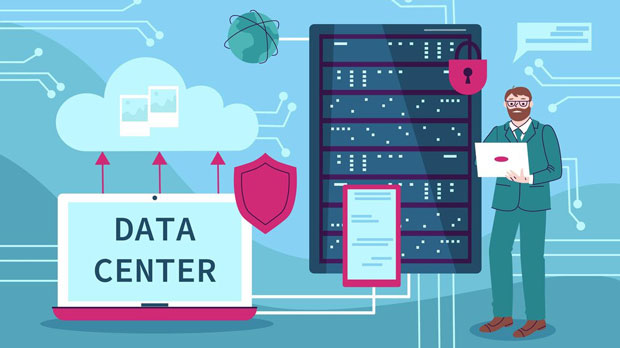In today’s interconnected world, cross-border business has become essential for organizations aiming to expand their reach and gain a competitive edge. However, as businesses venture into international markets, they often face obstacles like slow and unstable network connections, which can negatively impact customer experience and operational efficiency. A key solution to overcoming these challenges is the use of static ISP proxies, which help to optimize and accelerate access across geographical boundaries. By providing fast, stable, and secure access to international websites and services, Static ISP proxies enhance the user experience and ensure smoother business operations. This article explores the critical role of Static ISP proxies in cross-border business and how they can significantly improve performance and reliability. 1. The Challenges of Cross-Border BusinessCross-border business operations often face a range of challenges due to the disparity in internet infrastructure between regions. Some of the main issues include:- Slow Data Transmission: Websites and services located in different countries may experience latency due to longer routing times. The further the physical distance between a user and a server, the higher the likelihood of slow access speeds.- Geographic Content Restrictions: Many services restrict access to specific content based on the user’s location. Without proper access tools, businesses may find themselves unable to reach potential customers in certain regions.- Unstable Connections: Frequent network outages, high packet loss, and jitter can cause delays and disruptions, affecting user experience and business performance.Static ISP proxies solve these problems by providing reliable access routes that bypass local traffic congestion and restrictions, ensuring a smoother and faster connection for cross-border business activities.2. What Are Static ISP Proxies?A Static ISP Proxy is a type of proxy server that uses a fixed Internet Service Provider (ISP) address to route traffic. Unlike dynamic proxies, which change IP addresses frequently, static proxies maintain the same IP address over time. This makes them ideal for business applications that require consistent and secure connections, such as online marketing, market research, and website management.Key features of Static ISP proxies include:- Fixed IP Address: The IP address assigned to the user remains unchanged, providing stability and reliability for accessing specific regions and services.- Improved Speed and Reliability: Static ISP proxies are designed to offer a faster and more stable connection by optimizing routing and bypassing network bottlenecks.- Bypassing Geographic Restrictions: Static ISP proxies can effectively mask the user’s location and access content that may be restricted based on geographic regions.3. Why Static ISP Proxies Are Essential for Cross-Border BusinessFor businesses looking to expand their operations internationally, ensuring that their digital presence is reliable and accessible to users across different countries is critical. Here’s why Static ISP proxies are indispensable for cross-border operations:- Enhanced User Experience: By using Static ISP proxies, businesses can provide their international customers with faster, more stable access to websites, services, and products. This reduces latency, improves page load times, and enhances the overall browsing experience.- Stable and Consistent Connections: With a fixed IP address, businesses can maintain stable connections with clients and servers in different regions. This is crucial for applications that require high reliability, such as online transactions, customer support systems, and cloud services.- Improved SEO and Localized Marketing: Search engines may rank websites based on geographic relevance. Using a static ISP proxy with an IP from the desired region allows businesses to perform localized SEO, improving their visibility in search results and enhancing marketing campaigns.- Compliance with Local Regulations: Many countries have strict regulations regarding data privacy and internet access. Static ISP proxies allow businesses to adhere to these laws by ensuring that they use IP addresses from specific regions or countries, thus avoiding potential legal issues.- Better Security and Anonymity: By masking a user’s real IP address, Static ISP proxies also enhance security, making it more difficult for cybercriminals to target specific users or businesses. Additionally, the use of Static ISP proxies provides anonymity, which can help protect sensitive data.4. The Impact on Different Cross-Border Business FunctionsStatic ISP proxies benefit various aspects of cross-border business operations:- E-commerce: For e-commerce businesses, Static ISP proxies enable faster transactions and improved user engagement across regions. This ensures that customers can quickly browse products, place orders, and make payments without interruption.- Market Research: Companies conducting market research in foreign regions can use Static ISP proxies to gather data, such as price comparisons, competitor analysis, and customer sentiment, without facing regional blocks or IP-based restrictions.- Customer Support: Global businesses with customers in different time zones can leverage Static ISP proxies to improve customer support services. By ensuring faster communication channels and reducing wait times, businesses can deliver better customer service, which is crucial for customer retention.- Content Delivery and Streaming: For businesses that provide content, such as video streaming, Static ISP proxies can ensure that media files are delivered with minimal delay and buffering. This improves the quality of service for viewers, leading to higher satisfaction and engagement.5. How to Implement Static ISP Proxies in Your BusinessImplementing Static ISP proxies into your business operations can significantly improve performance. Here are some steps to get started:1. Choose a Reliable Proxy Provider: Look for a provider that offers a large pool of Static ISP proxies from different regions to meet the needs of your business. The provider should have a solid track record of reliability and excellent customer support.2. Configure the Proxies Correctly: Depending on your business needs, configure the proxies for specific tasks like web scraping, SEO, or content delivery. Make sure to set up the proxies correctly to ensure optimal performance.3. Monitor Proxy Performance: Regularly check the performance of your Static ISP proxies to ensure they’re functioning as expected. You may need to adjust the proxy settings based on the volume of traffic or specific use cases.4. Integrate with Business Tools: Integrate the proxies into your existing tools and software systems, such as content management systems, CRM platforms, and analytics tools, to streamline operations.5. Test for Effectiveness: Before fully implementing Static ISP proxies, run tests to evaluate their impact on access speeds, security, and user experience. Make adjustments as needed to maximize the benefits.6. Conclusion: Maximizing Cross-Border Business Success with Static ISP ProxiesIn conclusion, Static ISP proxies play an essential role in overcoming the barriers that businesses face when engaging in cross-border operations. By providing consistent, fast, and secure connections across international borders, Static ISP proxies enhance the user experience, improve business efficiency, and ensure compliance with local regulations. Whether you're in e-commerce, market research, or customer support, leveraging Static ISP proxies can be a game-changer for businesses looking to succeed in the global marketplace. With the right proxy solution, your business can unlock new opportunities, drive growth, and provide exceptional service to international customers.
Nov 14, 2025



































































